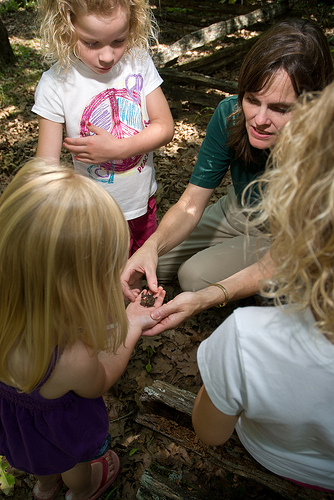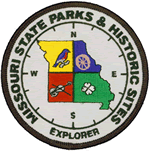
 Nearly everyone has probably taken a leisurely stroll or a vigorous hike through the woods. However, how many of us have ever stopped in our tracks to patiently listen to our natural surroundings or taken the time to wonder what kind of tree we stopped under to rest? Or who has walked through a historic building or historic landscape and wondered about the people who lived there?
Nearly everyone has probably taken a leisurely stroll or a vigorous hike through the woods. However, how many of us have ever stopped in our tracks to patiently listen to our natural surroundings or taken the time to wonder what kind of tree we stopped under to rest? Or who has walked through a historic building or historic landscape and wondered about the people who lived there?
Giving visitors a new appreciation and respect for the natural world and the historic setting around them along with an interest in preserving them is the main goal of the Missouri State Parks and Historic Sites Explorer Program. The patches and stars earned are visible symbols of a person's commitment to preserving the living environment.
Your first stop on the road to earning an Explorer patch is at a Missouri state park or historic site. Each location differs in the way they approach the program, ranging from working one-on-one with participants to going into classrooms throughout the year and producing an entire class of Explorers. During the summer months, some locations offer day camps where a patch can be earned upon completion. Other locations offer a variety of programs in the evenings to campers and other visitors, allowing them to work at it gradually. State parks and historic sites offer a variety of fun and educational nature programs to the public throughout the summer that help visitors earn the patch. History walks at state historic sites also count toward earning the patch.
 Once participants earn their first patch, they are encouraged to start over and do it again, earning a gold star patch with each subsequent completion. There are no time limits for completing the program.
Once participants earn their first patch, they are encouraged to start over and do it again, earning a gold star patch with each subsequent completion. There are no time limits for completing the program.
These are the three parts of the program.
Part I -- Interpretive Study
The candidate, with the assistance of interpretive staff, shall complete at least two of these five activities or similar activities:
Draw a map of the park or historic site area for a significant time period in the past, how it looks today or how it might look in the future
Tell about a special plant or animal significant to the park or historic site. What does the animal eat and what eats it? What happens to it after it dies? How would the world change if it became extinct? The candidate should make a poster of the plant or animal out of natural material.
Tell about a building, artifact or past resident of the park or historic site. Why was the building or artifact important, how was it made, and how was it used? What did the residents do or how did they improve their world? The candidate should make a poster of the building, artifact or resident.
Learn about a period craft and explain its significance, or build something using a reproduction of historical or ancient tools.
Tell about a special feature significant to the park or historic site. What makes it special, how was it used, and when was it used? How is it being preserved and what can we learn from it?
Part II -- Interpretive Programs
The candidate shall attend at least three interpreter-led programs. These may include guided tours, hikes, evening programs, etc. Many are free of charge but some may have a fee.
Part III -- Identification
The candidate must be able to identify 10 significant things (objects, people or other living things), giving the proper name and its importance to the park or historic site. They should consider a wide range of subjects -- plants, animals, rocks, fossils, minerals, famous Missourians, or historic events such as the Civil War. Interpretive staff may quiz the candidate.






